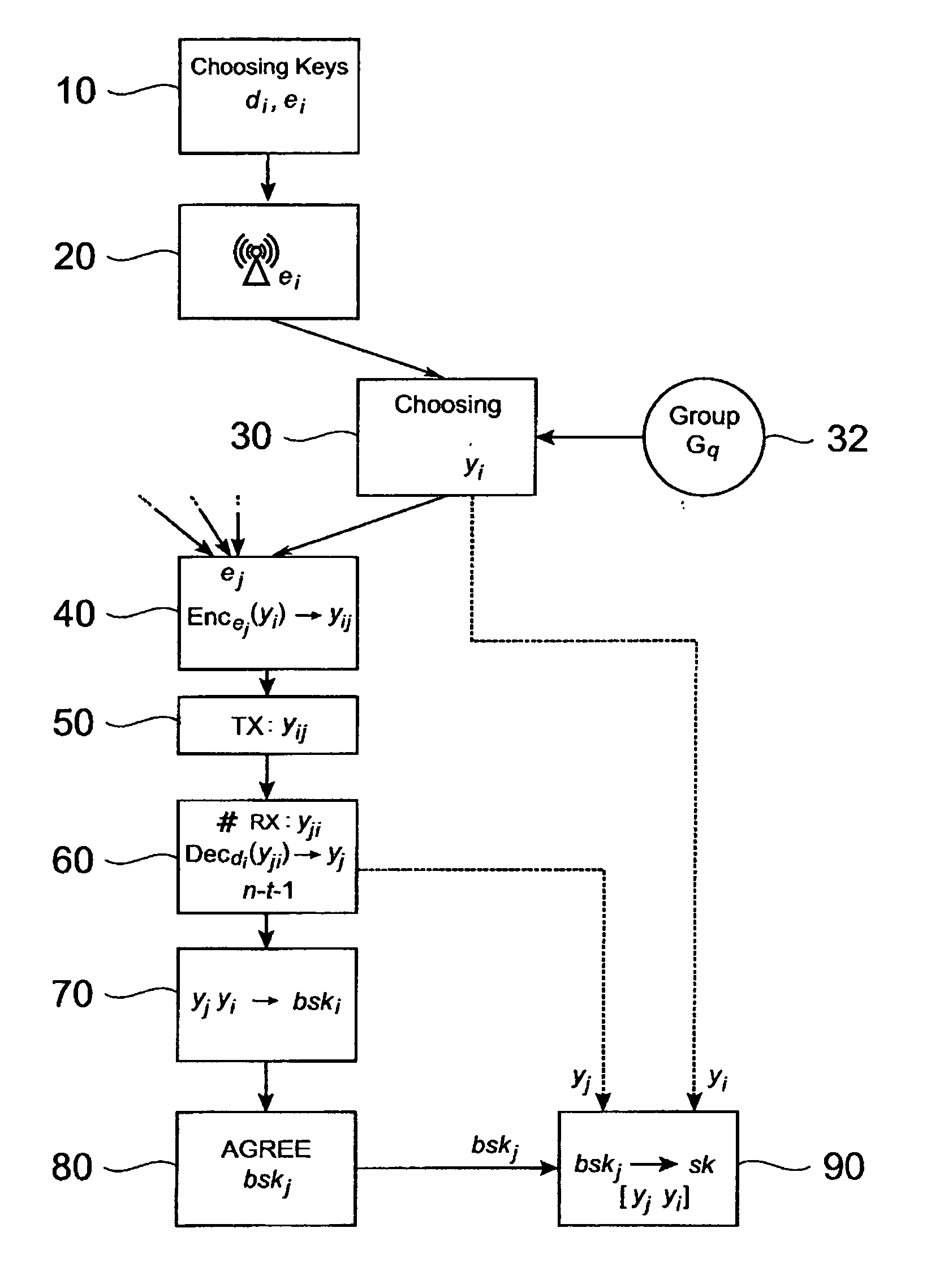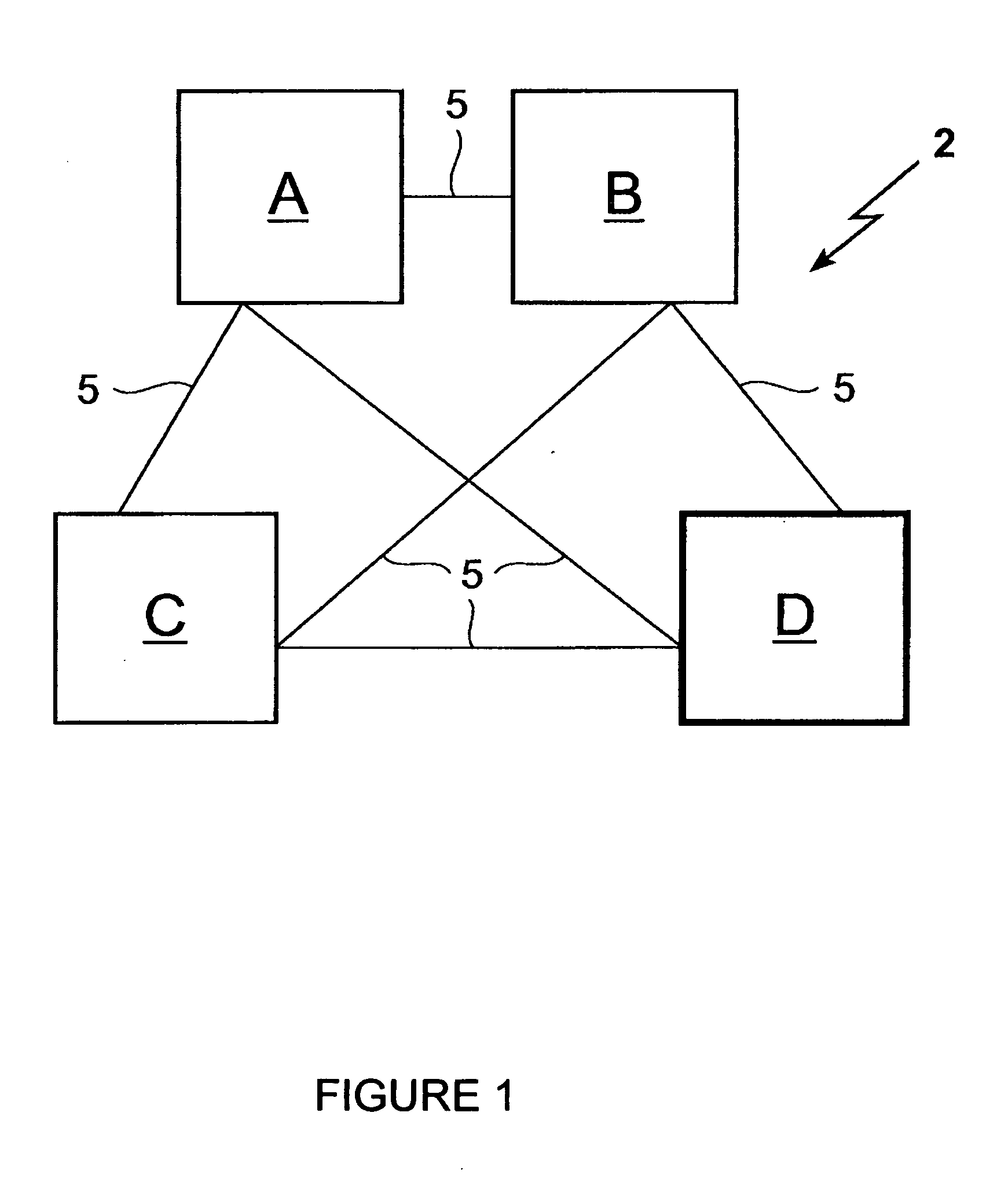Group key exchanges with failures
a key exchange and failure technology, applied in the field of group key exchanges with failures, can solve the problems of adversary which fully controls the network link cannot learn the key, no party of the group will terminate the protocol anymore, and protocols specifically vulnerable to denial of service attacks. , to achieve the effect of efficient decryption, efficient selection and efficient encryption
- Summary
- Abstract
- Description
- Claims
- Application Information
AI Technical Summary
Benefits of technology
Problems solved by technology
Method used
Image
Examples
Embodiment Construction
[0039]FIG. 1 shows an example of a common computer system 2 consisting here of four participating network devices A, B, C, D, which are connected via communication lines 5 to a network, e.g. the Internet. The system, in which a group key exchange protocol is performed, may have t faulty devices. Such faulty device is here the participating network device B also designated by “X”. Each participating network device A, B, C, D may be any type of computer device known in the art from a computer on a chip, a wearable or laptop computer, a mobile phone to a large computer system. The communication lines can be any communication means commonly known to transmit data or messages from one participating network device A, B, C, D to another. For instance, the communication lines may be either single, bi-directional communication lines between each pair of participating network devices A, B, C, D or one unidirectional line in each direction between each pair of participating network devices A, ...
PUM
 Login to View More
Login to View More Abstract
Description
Claims
Application Information
 Login to View More
Login to View More - R&D
- Intellectual Property
- Life Sciences
- Materials
- Tech Scout
- Unparalleled Data Quality
- Higher Quality Content
- 60% Fewer Hallucinations
Browse by: Latest US Patents, China's latest patents, Technical Efficacy Thesaurus, Application Domain, Technology Topic, Popular Technical Reports.
© 2025 PatSnap. All rights reserved.Legal|Privacy policy|Modern Slavery Act Transparency Statement|Sitemap|About US| Contact US: help@patsnap.com



